| Print it! Click here to download a high-resolution, printable PDF of the notation. |
| Chops: Intermediate Theory: Beginner Lesson Overview: • Learn how to add quarter-step bends to blues phrases • Create blues licks in the style of Albert King • Work on bending notes up a minor third |
Albert King used the minor pentatonic scale extensively. He rarely ventured out of it, but he got his money’s worth out of every note and phrase. King was a master at bending and not just half-step and whole-step bends, but also quarter-step bends and even huge bends that cover an entire major third. This was very innovative for his time.
In Fig. 1 we are going to learn a lick that uses a quarter-step bend. Use your index finger to play the C on the first string then use your ring finger to play the A. When you return to C you’re going to bend up just a small distance. You want to find the “crack” between the starting note and the very next note. I like to think of it as just turning my finger in an upward motion as if to prepare to bend but not to complete it. This is a great technique to master. Take time to really listen to the recording and to listen to yourself as you learn to make these quarter-step bends.
Download Fig. 1 audio...
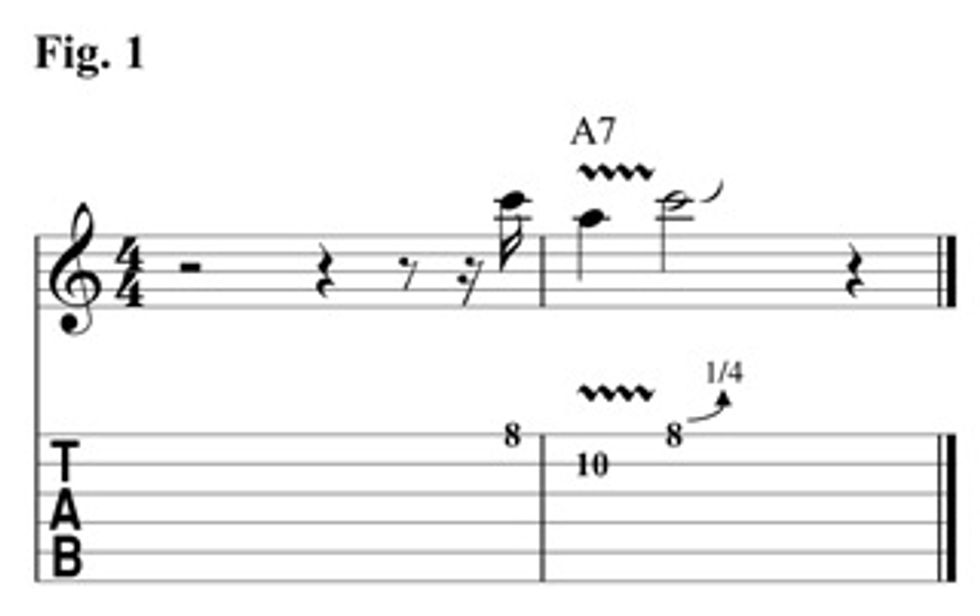
Fig. 2 is a descending minor pentatonic scale lick. Check out the jump from the A down to the E. Most everything else is scale-wise motion. You could also view this lick as a slightly modified A minor 7th arpeggio with an added 4th (D). Listen to the rhythm of this particular lick and really try to nail it.
Download Fig. 2 audio...
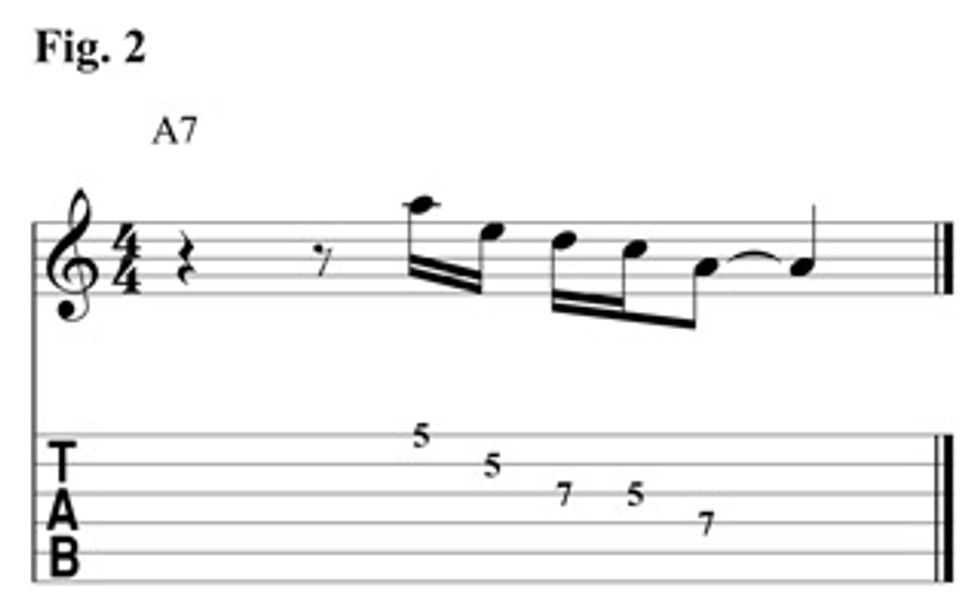
We get to some typical King-like bending in Fig. 3. Like Fig. 2, it’s straight out of the minor pentatonic scale. One big difference is how it starts with a whole step bend from G, which is the b7 to A. This is a great example of what Albert King would play over a slow blues. He would let those bends sustain for their full length. Another cool thing about this lick is it is how it fits over the end of a turnaround since its lands on E, which is the root of the V chord (E7).
Download Fig. 3 audio...
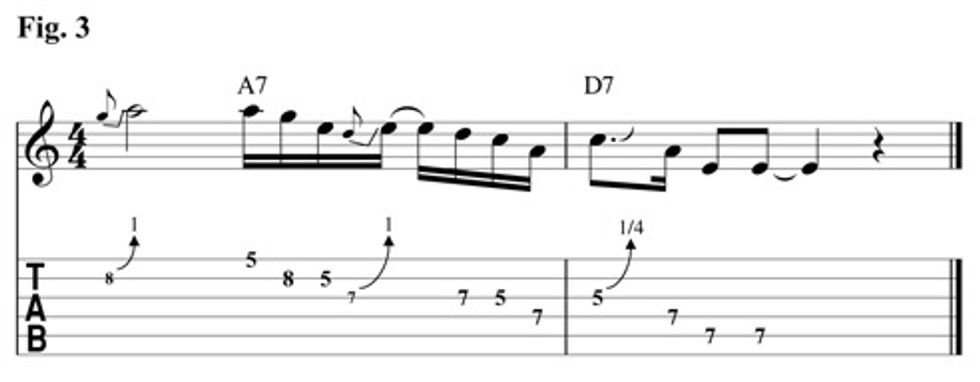
Fig. 4 is also a great slow blues lick that utilizes some bending. However, this lick moves between two positions of the minor pentatonic scale. The first measure of this example is out of the second position minor pentatonic scale. Then in the second measure we are back in the first position minor pentatonic fingering. I find it helpful to lead with my third finger on this one. I’ll start the lick using my third finger to make the first bend from C up a whole step to the D. Then, on the “and” of beat one I’ll also use my third finger to make this bend from D up a whole step to E.
Download Fig. 4 audio...

We move up to the fourth position of the A minor pentatonic scale in Fig. 5. This lick uses two really cool bends. The first is on beat three of the second measure; it’s a whole-step bend using the first finger. You don’t see this everyday, but I do this myself everyday since I lifted this from Albert King. The second is the last note of this example. This is a bend of two whole steps, or a major third. This is a signature Albert King move and you can hear on recordings how he doesn’t go straight to the target note. He really takes his time.
Download Fig. 5 audio...

Fig. 6 is another signature Albert King phrase that you can hear a lot in Stevie Ray Vaughan’s playing. Typically, when he bends a note with his third finger on the first string he’ll also trap the second string in there with his third finger. You don’t really hear a pitch it’s more of an ambient noise rather then a note. It’s very cool.
Download Fig. 6 audio...
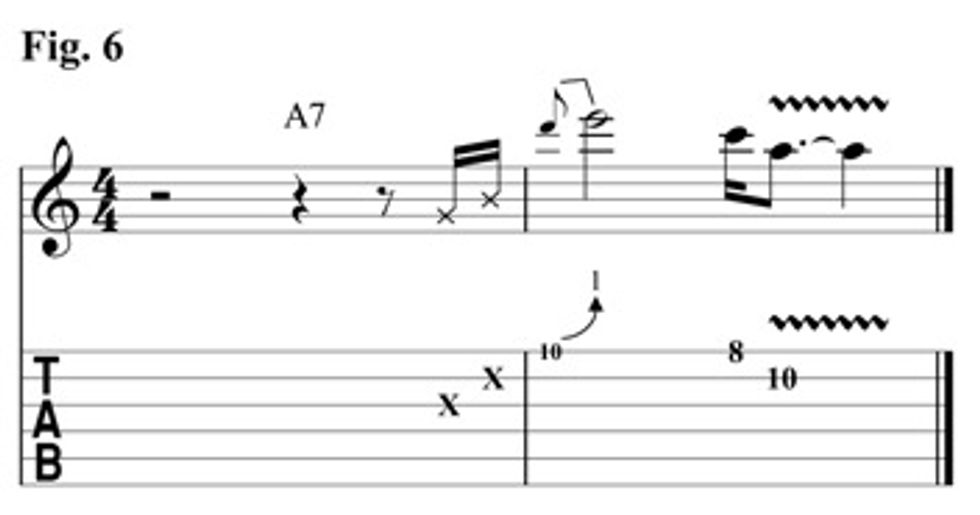
One thing you can learn from just listening to Albert King’s recordings is how he will take one lick and just build an entire solo from it. He’s not a flashy player, but don’t underestimate his chops. Next time you’re listening to an Albert King recording take out your guitar and play along. Try to play as if you’re in the band.
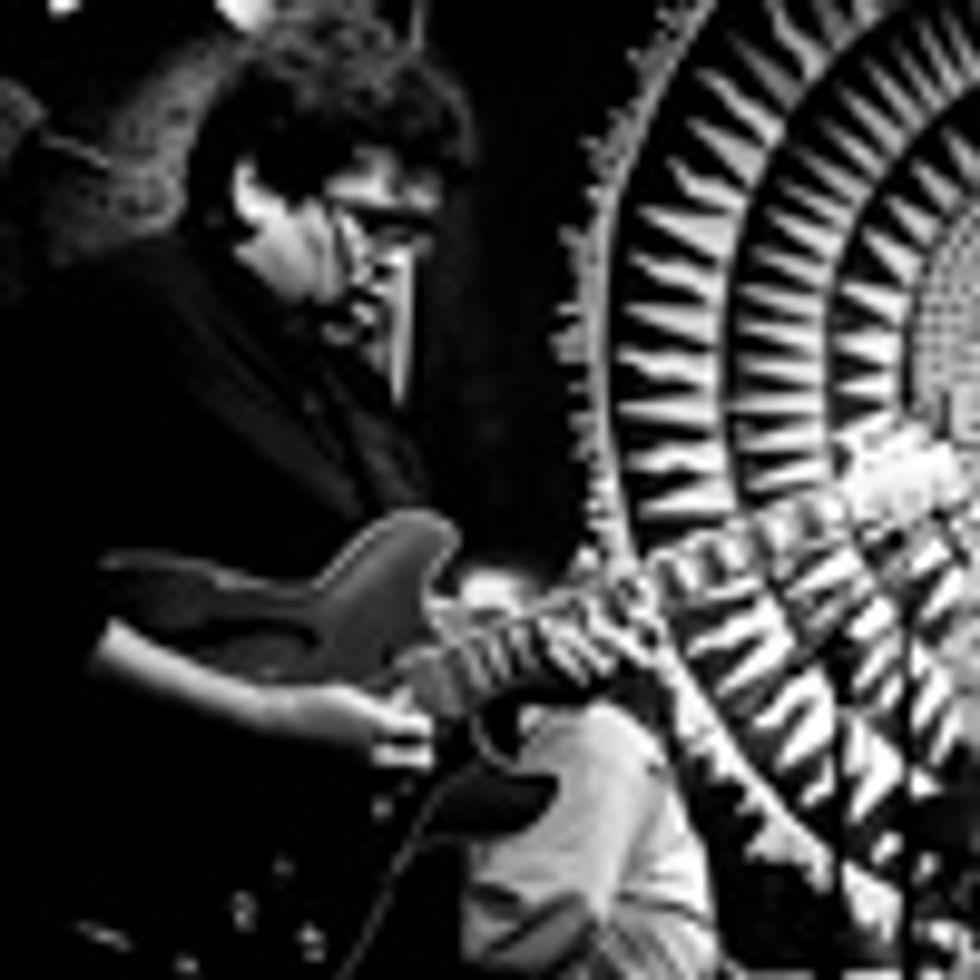 Dennis McCumber has been a guitar instructor and performer
for more than 20 years. He holds a Bachelor’s degree in music
education from The College of Saint Rose.
Dennis performs
regularly in the New York City area with various rock, blues, and funk bands, and occasionally as a classical soloist.
In addition to performing, Dennis has been a middle school
music teacher in the Bronx for the past 12 years. While
teaching in the Bronx, he was given a guitar lab by VH1
Save the Music and a keyboard lab from the radio station
Hot97 Hip Hop Symphony. Dennis has been an instructor at
the National Guitar Workshop since 1996, where he teaches
Blues, Funk, and Rock. Find out more at dennismccumber.com.
Dennis McCumber has been a guitar instructor and performer
for more than 20 years. He holds a Bachelor’s degree in music
education from The College of Saint Rose.
Dennis performs
regularly in the New York City area with various rock, blues, and funk bands, and occasionally as a classical soloist.
In addition to performing, Dennis has been a middle school
music teacher in the Bronx for the past 12 years. While
teaching in the Bronx, he was given a guitar lab by VH1
Save the Music and a keyboard lab from the radio station
Hot97 Hip Hop Symphony. Dennis has been an instructor at
the National Guitar Workshop since 1996, where he teaches
Blues, Funk, and Rock. Find out more at dennismccumber.com.





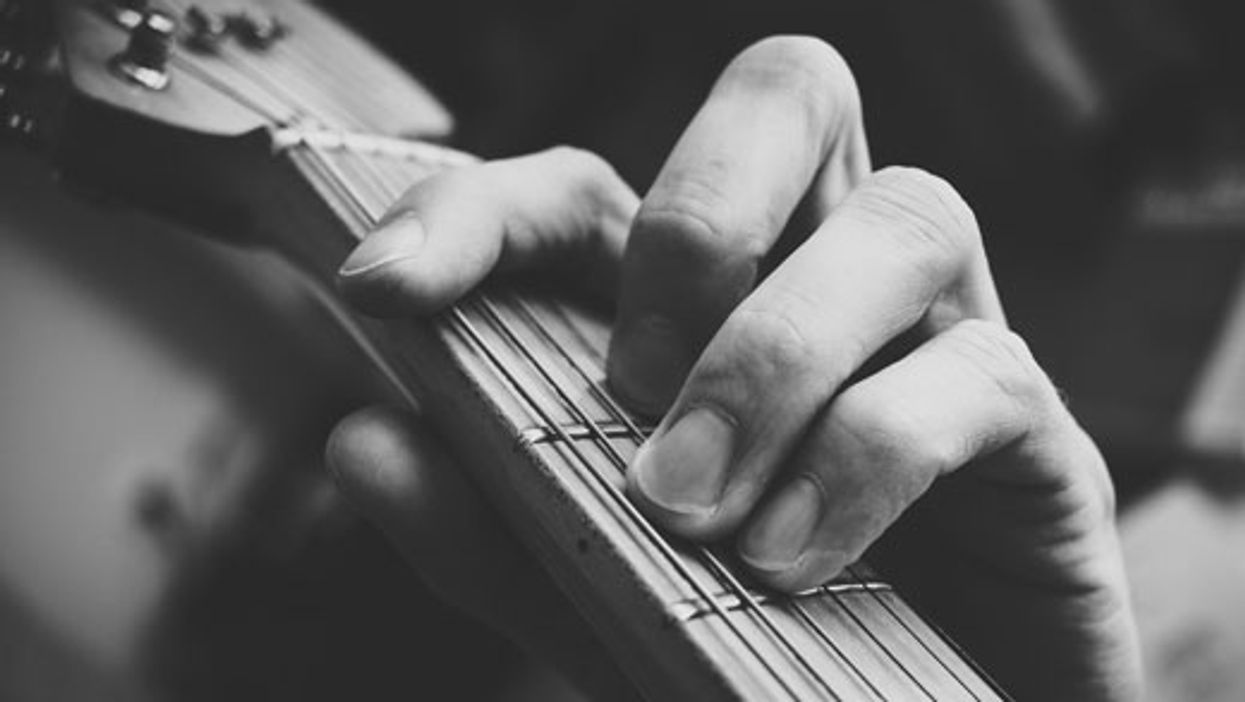


![Rig Rundown: Russian Circles’ Mike Sullivan [2025]](https://www.premierguitar.com/media-library/youtube.jpg?id=62303631&width=1245&height=700&quality=70&coordinates=0%2C0%2C0%2C0)







